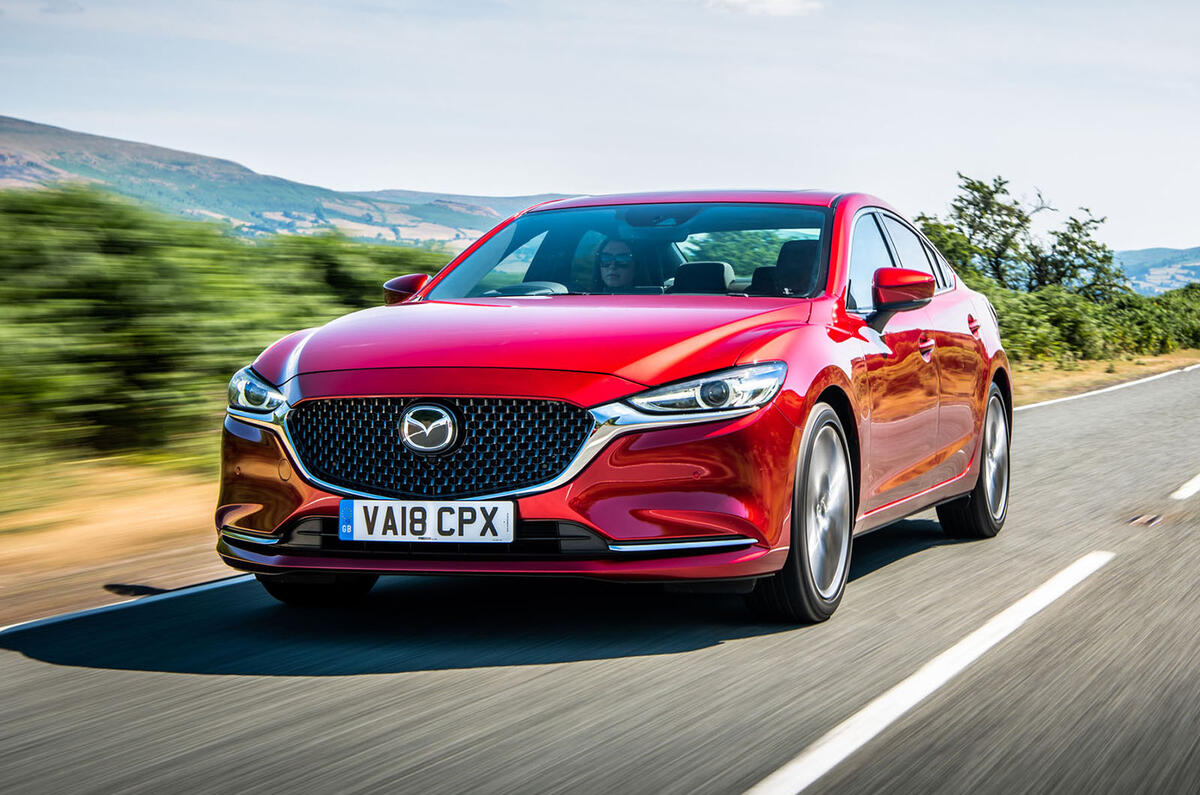What is it?
The Mazda 6 has undergone the third and most far-reaching facelift since the attractive mid-size saloon went on sale six years ago.
Not that the Mazda 6 shouts particularly loudly about it. The mesh of the grille sits a touch deeper, its chrome surround now extends outwards to underline revised LED headlights and the lower front bumper has been re-profiled, but overall Mazda has resisted tampering too eagerly with the car’s gracefully ageing features. Safer to make more subtle changes such as mounting the wide-bore exhaust tips a fraction further apart for more ‘stance’.
Under the bonnet things are different, because this updated 6 marks the debut of Mazda’s direct-injection 2.5-litre SkyActiv-G engine. It’s making an appearance because the company anticipates – naturally – a slight shift in its sales composition from diesel to petrol, and wants to offer buyers greater choice.
The new engine is naturally aspirated and already serves diesel-averse Americans who own the mammoth CX-9 SUV and its smaller sibling, the Mazda CX-5. With 191bhp it’s the most powerful engine to feature in a UK-spec 6, but also features cylinder deactivation, operating just two of its four combustion chambers under light throttle loads. Combined fuel economy is duly rated at 42.2mpg on the new WLTP cycle.
This range-topping 2.5 is joined by subtly revised versions of the existing 2.0-litre SkyActiv-G engines – of 143bhp and 163bhp – and is mated solely to Mazda’s six-speed auto gearbox, which uses paddle-shifters mounted on the back of a thin-rimmed steering wheel.







































Join the debate
Add your comment
250bhp Turbo 2.5 for UK?
Just done a search and in USA, Mazda offer the 6 with 2.5l 250bhp Turbo with Auto. Also offer the N/A 2.5 with Manual.
Apparently Carplay/Auto coming via dealer update or standard from December'18. USA only or for UK too?
2.5 N/A Petrol seems like a sticky plaster...
I love my 2014 6 Tourer Diesel and playing around with the idea of replacing it. However, not enough has been done to unseat me just yet. The styling changes & nicer cabin are all good, but where's the mild hybrid, dual-clutch 'box, or even turbo petrol engines to keep up with everyone else?
2.5 N/A petrol auto seems like a desperate raid of the global parts bin to give the range a flagship but it's too slow & thirsty. Sweet spot is still lower down the range, diesel & manual, when it's still unbeatable.
"This atmospheric 2.5-litre engine"
Do there exist ICE engines not needing air to breath? If they'd be capable of working on the Moon. Or not, then there exist no ICE engines that aren't -- atmospheric. The correct phrase is -- normally aspirated. To employ the phrase "atmospheric" to describe an engine lacking forced induction, this normally aspirated -- is moronic. I hope the staff at Autocar desist with moronic phrasing in the future.